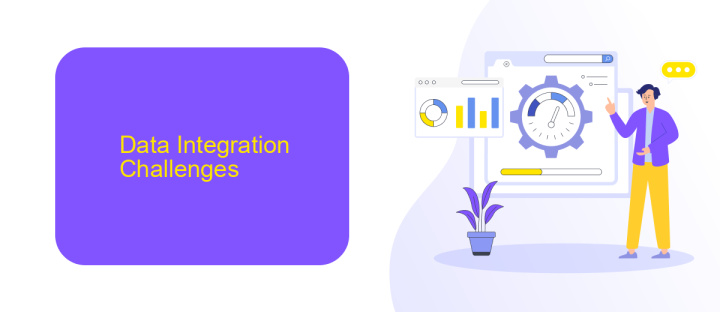Data Integration Development
Data integration development is a critical process in modern businesses, enabling seamless connectivity and data flow between diverse systems and applications. By unifying disparate data sources, organizations can enhance decision-making, improve operational efficiency, and gain valuable insights. This article explores the key strategies, tools, and best practices for effective data integration, ensuring that your enterprise remains competitive in the data-driven landscape.
Introduction
Data integration is a critical component in modern business environments, enabling seamless communication and data flow between disparate systems. By integrating data from various sources, organizations can make more informed decisions, improve operational efficiency, and enhance customer experiences. The process involves combining data residing in different sources and providing users with a unified view.
- Streamlines data management and eliminates silos
- Enhances data accuracy and consistency
- Improves decision-making processes
- Facilitates real-time data access
- Supports compliance and regulatory requirements
One of the tools that simplifies data integration is ApiX-Drive. This service allows users to connect various applications and automate data transfers without the need for coding. By leveraging ApiX-Drive, businesses can set up integrations quickly and ensure that data flows seamlessly between their systems, thereby reducing manual data entry and minimizing errors.
Data Integration Challenges

Data integration presents numerous challenges that can hinder the seamless merging of data from disparate sources. One significant issue is data inconsistency, where different systems may store similar data in various formats or structures, leading to conflicts and inaccuracies. Additionally, data quality problems such as missing values, duplicates, and outdated information can further complicate the integration process. Ensuring that the integrated data is accurate, consistent, and up-to-date requires substantial effort and sophisticated tools.
Another challenge is the complexity of integrating data from multiple sources, especially when dealing with large volumes of data in real-time. This often demands advanced technical skills and specialized software solutions. Tools like ApiX-Drive can simplify this process by providing automated workflows and pre-built connectors for various applications, significantly reducing the time and effort required for integration. However, even with such tools, organizations must carefully manage and monitor the integration process to address any issues that arise and ensure the integrity of the integrated data.
Data Integration Development Process

The data integration development process involves combining data from different sources into a unified view. This process is essential for businesses to make informed decisions and ensure data consistency across various platforms. It typically includes several stages, each crucial for the successful integration of data.
- Requirement Analysis: Identify the data sources and define the integration requirements.
- Data Extraction: Extract data from various sources such as databases, APIs, and flat files.
- Data Transformation: Cleanse, format, and transform the data to meet the target system's requirements.
- Data Loading: Load the transformed data into the target system or data warehouse.
- Testing and Validation: Ensure the accuracy and consistency of the integrated data.
- Monitoring and Maintenance: Continuously monitor the integration process and make necessary adjustments.
Using services like ApiX-Drive can significantly streamline the data integration process. ApiX-Drive offers automated data transfer between various platforms, reducing the need for manual intervention and minimizing errors. By leveraging such tools, businesses can achieve more efficient and reliable data integration, ultimately leading to better decision-making and operational efficiency.
Tools and Technologies for Data Integration Development

Data integration development involves combining data from different sources into a unified view, which is a critical task in modern data-driven organizations. To achieve this, various tools and technologies are employed to streamline the process and ensure data consistency and accuracy.
One of the primary technologies used in data integration is ETL (Extract, Transform, Load) tools, which facilitate the extraction of data from multiple sources, transformation into a suitable format, and loading into a target system. Additionally, API integration platforms like ApiX-Drive provide robust solutions for automating data flow between disparate systems without requiring extensive coding knowledge.
- ETL Tools: Talend, Informatica, Apache Nifi
- API Integration Platforms: ApiX-Drive, Zapier, MuleSoft
- Data Warehousing: Snowflake, Amazon Redshift, Google BigQuery
- Data Transformation: dbt, Apache Spark, Alteryx
Using these tools and technologies, organizations can effectively manage data integration tasks, ensuring that data from various sources is accurately combined and readily available for analysis. The choice of tools depends on the specific requirements, complexity, and scale of the integration project.
- Automate the work of an online store or landing
- Empower through integration
- Don't spend money on programmers and integrators
- Save time by automating routine tasks
Best Practices for Data Integration Development
Effective data integration development begins with a clear understanding of the data sources and their formats. Establishing a robust data mapping strategy is crucial for ensuring data consistency and accuracy. It's also important to implement data validation and cleansing processes to maintain data quality. Leveraging tools like ApiX-Drive can significantly streamline the integration process, enabling seamless connections between various platforms without extensive coding.
Another best practice is to prioritize security and compliance. Ensure that data transfer protocols are secure and adhere to relevant regulations such as GDPR or HIPAA. Regularly monitor and audit your integrations to detect and address any issues promptly. Additionally, maintaining comprehensive documentation of your integration workflows and configurations will facilitate easier troubleshooting and future updates. By following these practices, you can achieve efficient and reliable data integration that supports your business objectives.
FAQ
What is Data Integration Development?
Why is data integration important for businesses?
What are the common challenges in data integration?
How can automation tools help in data integration?
What should I consider when choosing a data integration tool?
Routine tasks take a lot of time from employees? Do they burn out, do not have enough working day for the main duties and important things? Do you understand that the only way out of this situation in modern realities is automation? Try Apix-Drive for free and make sure that the online connector in 5 minutes of setting up integration will remove a significant part of the routine from your life and free up time for you and your employees.


